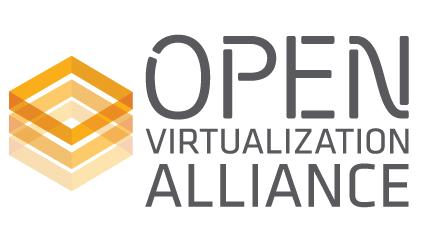
Crosspeer Cloud Open Virtualization
KVM Hypervisor
A hypervisor is a specialized operating system that runs 'virtual' machines instead of 'physical' machines. The KVM hypervisor represents the next generation in Open Source virtualization, and open virtualization is the first step towards the Open Cloud. Unlike many cloud providers who use proprietary hypervisors, the Crosspeer Cloud is built on KVM, an open platform through which we can deliver to our customers an 'Open Cloud' solution. Cloud Computing after all, is all about offering a new delivery & consumption model for IT resources, in order to deliver both business and IT benefits.
Clouds come in a variety of flavors, from private to public to hybrid, but all of these should have three key characteristics - Virtualization, Standardization and Automation. KVM and its ecosystem support all of these characteristics.
KVM is fully integrated into the Linux operating system both as a host and a 'guest.' Unlike other hypervisors, KVM does not make any distinction between running in either host or hypervisor mode. This duality in design has helped KVM to rapidly mature into a stable, high-performing hypervisor, positioned to outperform any other hypervisor on the market today.
KVM is the most recent step in the evolution of Open Source, x86 Virtualization Technology
KVM turns the Linux kernel into a bare-metal hypervisor using the hardware virtualization support built into Intel and AMD processors. This means that KVM can use Linux to do many of the things that a hypervisor needs to do, like scheduling tasks, managing memory and interacting with hardware devices. Both Intel and AMD continue to add new features to hardware to improve performance for virtualizaton, offloading more features from the hypervisor into the actual 'silicon' to provide improved performance and a more robust platform.
The KVM hypervisor creates virtual machines as Linux processes which can then run other x86 operating systems as a 'guest' operating system, and using a modified version of another open source module - QEMU - to provide I/O device emulation inside the virtual machine. KVM is thus able to efficiently and effectively run Windows, Linux and other x86 workloads in virtual machines.
Crosspeer uses KVM to provide the underlying hypervisor for the Crosspeer Elastic IAAS Cloud, supporting a variety of guest operating systems, from mainstream operating systems such as Linux and Windows, to other platforms including OpenBSD, FreeBSD, OpenSolaris, Solaris x86, and MS-DOS.
Live Migration without Interruption
KVM supports Live Migration which provides the ability to move a running virtual machine between physical host machines with no interruption to service. Live Migration is transparent to the end user, the virtual machine remains powered on, network connections remain active and user applications continue to run while the virtual machine is relocated to a new physical host. In addition to Live Migration KVM supports saving the virtual machine's current state to disk to allow it to be stored and resumed at a later time.
Performance and Scalability
The Linux kernel, with its 20 years of development, is the industry leader in terms of performance and scalability. By placing the KVM hypervisor directly into the Linux kernel, KVM inherits the performance advantages and scalability features of Linux, and supports virtual machines with up to 16 virtual CPUs and 256GB of RAM and host systems with 256 cores and over 1TB of RAM. KVM has earned a reputation as the highest performing hypervisor in virtualization benchmarks. One of the key ingredients to this success is the KVM hypervisor's ability to handle the high I/O rates required by enterprise workloads such as databases, ERP (Enterprise Resource Planning) systems, and low-latency financial trading applications that are running in virtual machines.
Actual test results validate that a single KVM guest can handle more than 800,000 I/Os per second (IOPS) and four KVM guests running on the same host can support an aggregate I/O rate of more than 1.4 million IOPS - hitting the "bare-metal" limit of the test setup. This benchmark demonstrates that real-world enterprise workloads such as SAP and Oracle can run efficiently in a KVM virtualized environment.
Security
Since a virtual machine in implemented as a Linux process, it leverages the standard Linux security model to provide isolation and resource controls. The Linux kernel includes SELinux (Security-Enhanced Linux) a project developed by the US National Security Agency to add mandatory access controls, multi-level and multi-category security as well as policy enforcement. SELinux provides strict resource isolation and confinement for processes running in the Linux kernel.
The Linux Advantage - Enterprise Class Performance
By leveraging Linux for core functions, KVM is able to avoid re-inventing the wheel by taking advantage of the performance, scalability & security already built into Linux, which has been enterprise hardened for over 10 years and is trusted by millions of organizations in the heart of their data centers to run their mission critical workloads. This gives KVM a significant 'feature velocity' that other virtualization solutions cannot match. KVM represents the latest generation of open source virtualization. KVM builds on the experience of previous generations of technologies and leverages the modern hardware available today.
Investment and Contribution to KVM Development
In addition to the broad Linux community KVM is supported by leading vendors in the industry including Red Hat, AMD, HP, IBM, Intel, Siemens, SGI, SUSE and others. It is worth noting that IBM has dedicated its expertise and longstanding commitment to enterprise virtualization and open source, to virtualization with KVM. Today, over 60 IBM programmers are actively working on KVM development as part of the KVM, QEMU and libvirt open source communities - which is one of the largest teams in the industry.
Open Virtualization Alliance
The mission of the Open Virtualization Alliance (OVA) is to foster the adoption of KVM for Open Virtualization, accelerate the emergence of an ecosystem of third-party solutions around KVM, increase overall awareness and understanding of KVM, encourage interoperability and promote best practices. Founding members of the Open Virtualization Alliance include BMC Software, Eucalyptus Systems, HP, IBM, Intel, Red Hat and SUSE. The member roster continues to grow exponentially since formation in May 2011. Today KVM is rapidly becoming the preferred choice in open virtualization technology by Fortune 500 companies. Crosspeer Cloud brings KVM virtualization to organizations of all sizes with price and performance advantages and scalability unmatched in the industry.


Kernel Virtual Machine - The Next Generation Hypervisor


